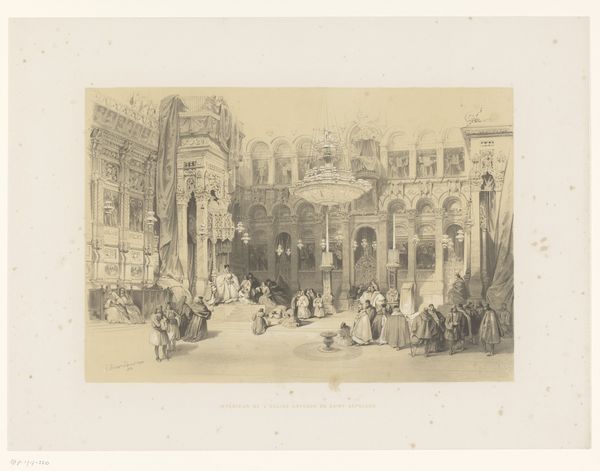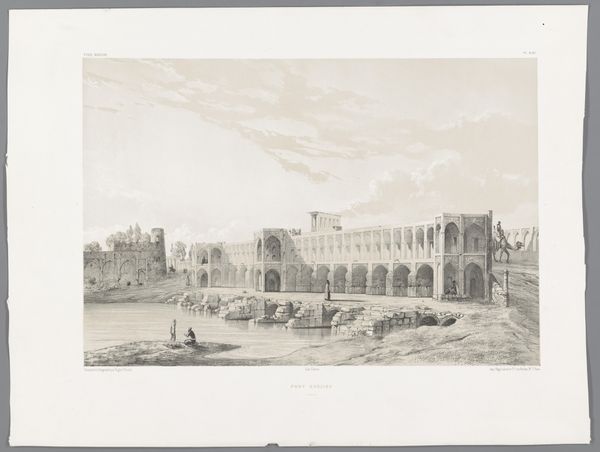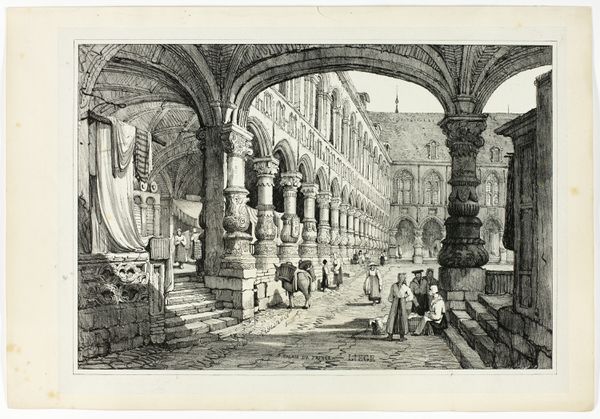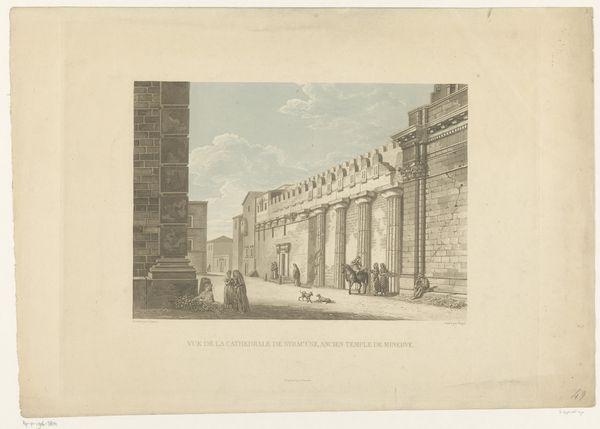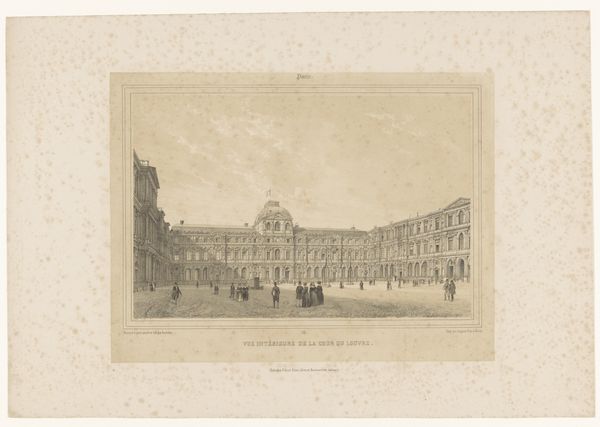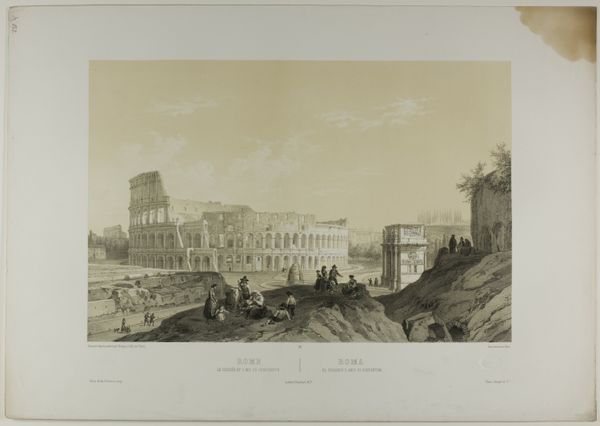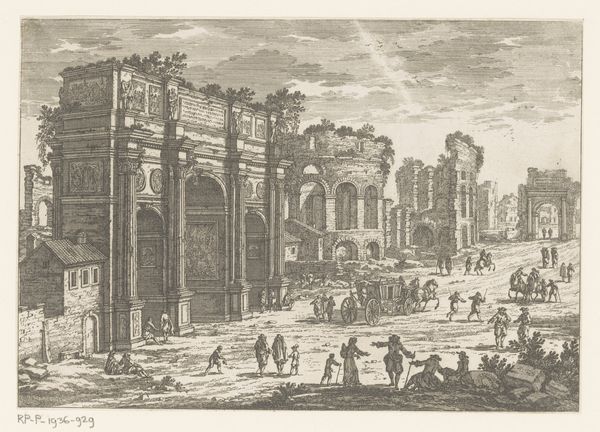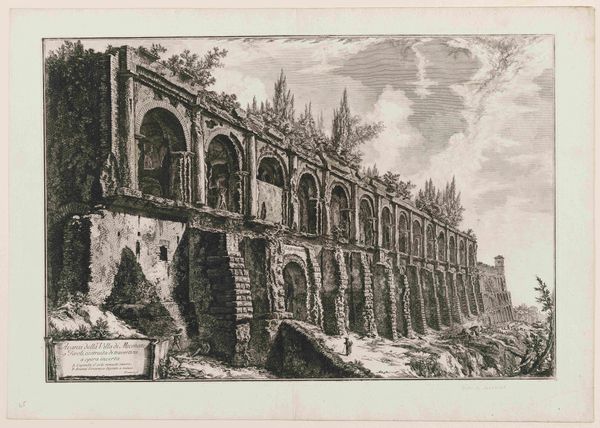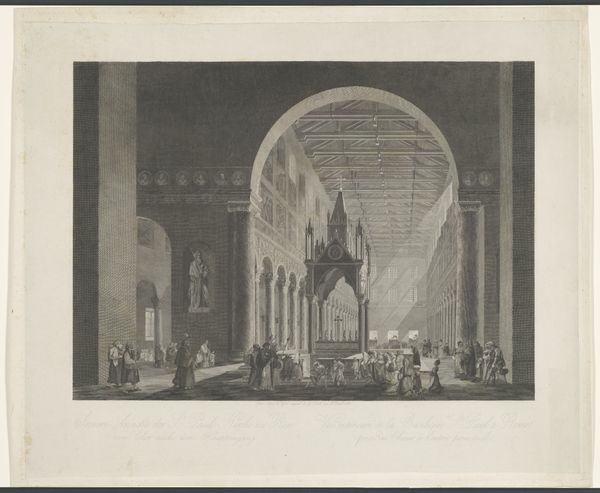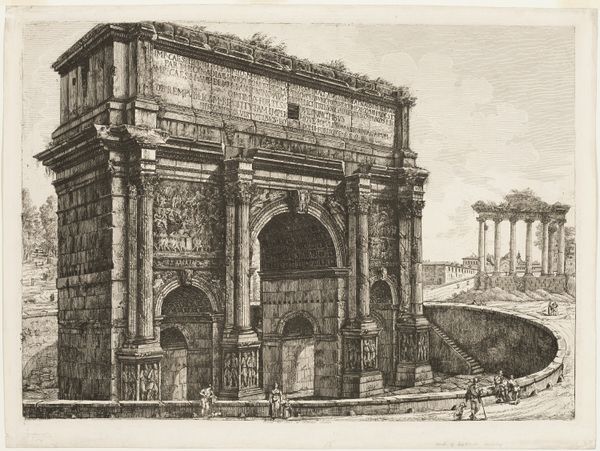
drawing, lithograph, print
#
drawing
#
pale palette
#
muted colour palette
#
pale colours
#
lithograph
# print
#
light coloured
#
landscape
#
white palette
#
natural colour palette
#
cityscape
#
islamic-art
#
natural palette
#
soft colour palette
#
watercolor
Dimensions: height 445 mm, width 627 mm
Copyright: Rijks Museum: Open Domain
Curator: Welcome! We're standing before "Caravanserai-i-Shah te Qazvin," a print created by Eugène Flandin between 1843 and 1854, currently residing at the Rijksmuseum. The print is a lithograph, giving it this very interesting textured, almost ephemeral quality. What’s your first impression? Editor: There's a quiet stillness that almost contradicts the apparent bustling activity in the courtyard. A hushed, almost melancholic tone amidst this place meant for exchanging goods and resting. I’m immediately drawn to the subtle gradation of the pale palette. Curator: That’s an interesting observation! Flandin’s travels through Persia and the Middle East came at a historical moment when the West was deeply interested in understanding the socio-political and cultural identity of those regions. Prints such as this fed a particular kind of imperial imagination. The question remains of how truthfully they conveyed the subject, or whose reality was centered. Editor: I see the dome of what looks like a mosque rising in the background, almost a constant, looming presence. It immediately makes me consider the importance of faith as a social structure – one of constant orientation, visually and spiritually – for the people frequenting the caravanserai. The symbol of power looms above these ordinary, necessary actions of travel and trade. Curator: Absolutely. It's essential to look beyond the purely picturesque here and consider how the artist chose to represent, or perhaps even misrepresent, cultural norms and power dynamics. Editor: Yes, it goes beyond mere representation. The way light plays, the way the human figures blend so seamlessly into their surrounding – almost a pastiche – this, I believe, communicates something deeply embedded in shared cultural memory of public spaces like this. The visual language tells us a lot about continuity and perhaps the lack thereof, too. Curator: Do you find this particular artwork romanticizes the caravanserai and thus an element of its real day-to-day conditions might be washed out? Editor: Not quite romanticizes; it’s too quiet and pale to be romantic. Evokes a world steeped in time and ritual more than fantasy. There are other stories unfolding beneath what at first appear to be images of pure function and faith, I am more certain of this as I see it now. Curator: This discussion truly reveals how much this print has to offer from diverse points of view. Thank you for sharing your insights. Editor: It was my pleasure; it’s been really insightful diving into this artwork's blend of visual storytelling. Thank you.
Comments
No comments
Be the first to comment and join the conversation on the ultimate creative platform.
